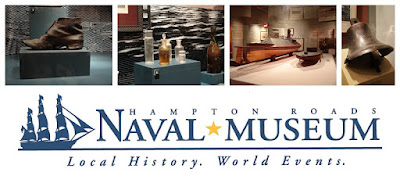During World War I, Navy women, known Yeoman (F) or more crudely as yeomanettes, wore uniforms that combined pre-existing pieces such as the “Norfolk jacket” and the popular “sailor hat.” The Navy chose these easy-to-compile uniforms so that the ladies would look professional, but distinctive from the male sailors. The government discontinued this form of sailor dress when it eliminated the Yeoman (F) rate at the end of the conflict.
As the United States entered World War II, it quickly became clear that the country would need much more man (and woman) power to emerge victorious. This prompted the contested creation of a women’s auxiliary unit for each branch of the military. On July 30, 1942, Congress created the Women’s Naval Reserve, colloquially known as the WAVES.
Because the Yeoman (F) uniform was too outdated to fit with military or civilian styles of the 1940s, the Navy put together a committee of military leaders and fashion experts to decide upon an appropriate new ensemble. Like their World War I counterparts, the Navy leadership did not want the women to dress like men. Instead, Lieutenant Commander Mildred H. McAfee, leader of the WAVES, explained that their uniforms needed to strike a balance between “becoming and functional.”
Because the Yeoman (F) uniform was too outdated to fit with military or civilian styles of the 1940s, the Navy put together a committee of military leaders and fashion experts to decide upon an appropriate new ensemble. Like their World War I counterparts, the Navy leadership did not want the women to dress like men. Instead, Lieutenant Commander Mildred H. McAfee, leader of the WAVES, explained that their uniforms needed to strike a balance between “becoming and functional.”
Mrs. James V. Forrestal, wife of the Under Secretary of the Navy and former fashion editor for Vogue, suggested a designer with a similar philosophy. Main Rosseau Bocher, known as Mainbocher, was born in Chicago and served in France during World War I. After the war, he stayed in Paris and became a fashion editor for Vogue in 1923. In 1929, he left the magazine to start his own design shop. He soon gained a reputation for high quality “understated, elegant designs.” In 1940, Mainbocher moved back to the United States and opened a shop in New York.
Overall, Mainbocher wanted women to wear clothes that were practical and versatile, as well as chic. In 1942, Mainbocher agreed to design the WAVES uniforms and charged the Navy one-dollar for his designs. This was the first military uniform designed by someone well known in the fashion world. As a result, the uniforms themselves received a great deal of press coverage, to the extent that it upset some female officers. The WAVES were quite aware that Mainbocher designed their uniforms, and some women even asserted that the “trim and ‘natty,” uniforms had encouraged them to join the Navy instead of another branch.
 |
| WAVE officers at Indiana University, wearing their service dress uniforms. These were considered "military chic." Photograph Credit: Indiana University Archives |
For some, that sense of pride remained even after the war. Marjorie Philpotts Grantham, Norfolk native and 1935 graduate of Maury High School, served as a WAVES lieutenant during World War II. She donated her service dress uniform, complete with the white dress shirt, to HRNM. In a letter to the curator, her love of the uniform showed through. She reminded him to be sure the tie was “tied in a square knot, not a ‘granny,” and mentioned that she hoped to find a shoulder bag to add authenticity. Mrs. Grantham, like many other women of her generation, clearly had strong, and quite fond, memories of her time in the service.
 |
| Marjorie Grantham's uniform in the HRNM gallery. Note that the tie is carefully tied in a square, rather than granny knot. |
For more information on Yeoman (F) uniforms, see HRNM historian Gordon Calhoun’s post on this topic.

.jpg)

No comments:
Post a Comment